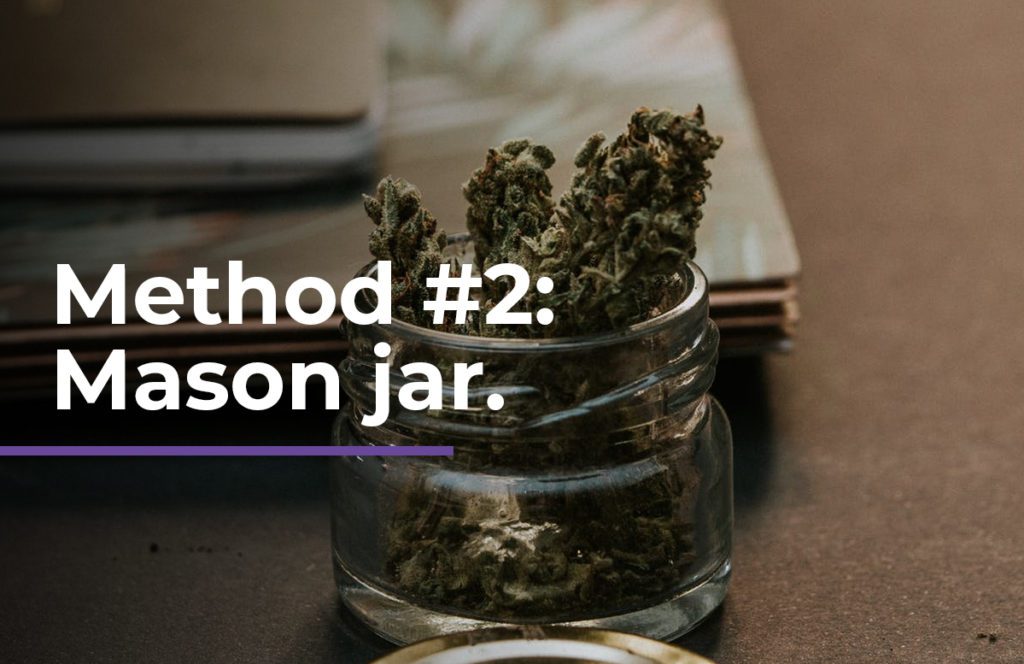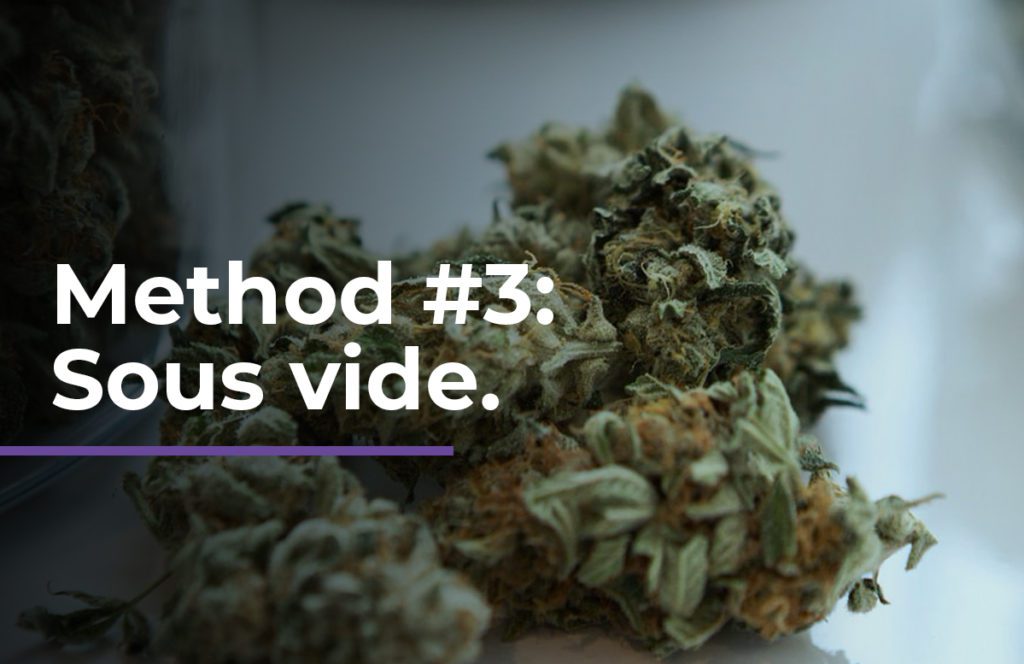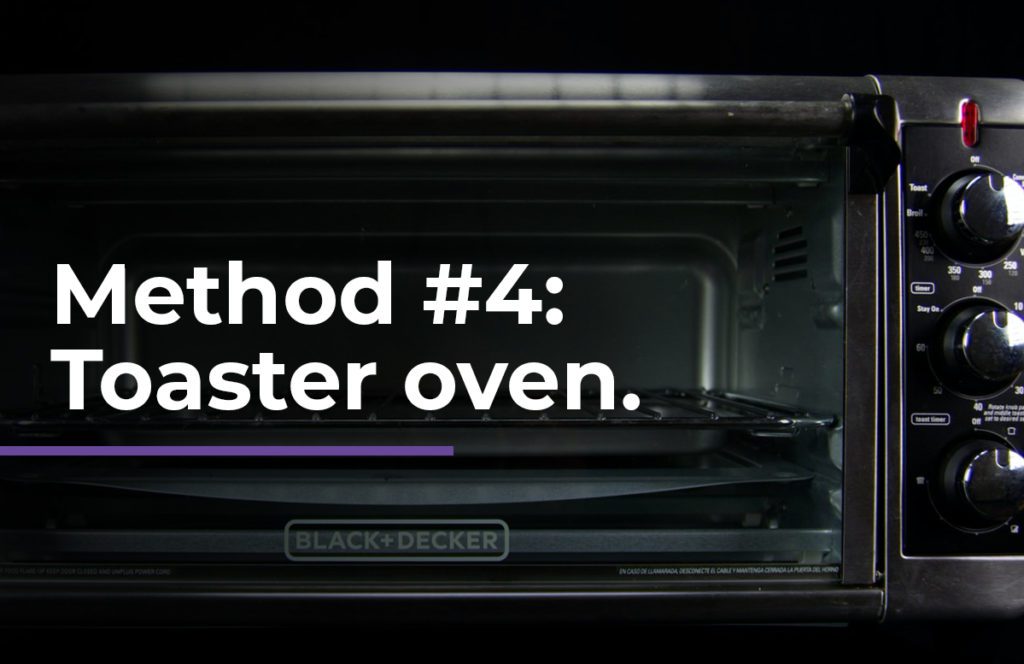Decarboxylation, despite being a process surrounded by misinformation and myths, is an integral process involved with cannabis consumption of any kind.
To put it simply–the science behind decarbing is just a function of time and temperature. Heat the material, let it “cook” for a specific amount of time, and your raw cannabis is transformed from simple plant material into a potent ingredient or treatment for your favorite consumption methods. Decarbed cannabis can be used to make dispensary grade topicals, smokable herbs, tinctures, gummies, brownies, smoothies, cooking oils like olive oil or coconut oil, cannabutter, and more.
Though partial decarboxylation can occur when simply allowing the raw plant material to dry, the results are minimal and provide a lackluster experience compared to any modern decarboxylation process. The quickest, easiest method of decarboxylation is smoking or vaporizing, which makes cannabinoids instantly available for absorption through inhalation.
Despite their popularity, the most simple methods aren’t as efficient as they could be and–while better than simply drying–result in a waste of raw cannabis, as well as the potential THC and CBD availability. This has led to the development of several different decarboxylation methods which we’ll share with you, as well as our own which we are proud to include… the Ardent FX decarboxylator.
TABLE OF CONTENTS
Here’s How to Decarb Weed (6 Decarboxylation Methods)
1. Oven Decarboxylation
The oven decarboxylation method is among one of the most common household decarboxylation processes because it only requires basic tools usually found in most homes.
What do you need
- An oven
- Baking sheet
- Parchment paper
- Spice grinder
How to
Pre-heat your oven to 240 degrees Fahrenheit. Put a sheet of parchment paper over your baking sheet, and loosely grind your cannabis over top. Place your baking sheet on the middle rack of the oven and remove it after 40 minutes.

Our research with MCR Labs shows that when decarbing flower with a max potential of 18.1% THC in the oven, the max potential for conversion is 15.3%. The oven method is an effective way to convert tetrahydrocannabinolic acid (THCa) and cannabidiolic acid (CBDa) into activated, bio-available THC and CBD, but either fails to fully activate all of the cannabinoids in your plant material, or burns some off due to the fluctuation and variability of oven temperatures. You may experience strong aromas through your decarboxylation process while using the oven method, so this method isn’t advisable for those who need to be discreet.
2. Mason Jar Decarboxylation
Mason jar decarboxylation is a convenient and discreet decarboxylation method, although it takes an extra watchful eye, since it’s performed using an open flame, and uses glass, which can be sensitive to temperature changes, making it potentially dangerous if you’re not careful.
What do you need?
- Mason jar
- A pot
- Water
How to
Roughly grind your plant material and place it inside your mason jar before tightly sealing. Fill up your pot with water about halfway, place the jar inside, and heat on your stovetop at low/medium heat. If the jar is placed in the pot when the water is too hot, the jar runs the risk of cracking or exploding. Let the jar and water simmer in the pot for about 90 minutes, being sure that the water doesn’t evaporate throughout the decarbing process.

This is a very effective method for those who need a discreet decarb process, as the smell is generally contained within the air-tight mason jar. The mason jar method isn’t the most precise decarb method, since the temperature under an open flame has many variables. You can use an oven thermometer to make sure the temperature remains consistent. The temperature will never go above 220 degrees Fahrenheit – that of boiling water.
3. Sous Vide Decarb
The sous vide decarb method uses water and controlled heat to decarb weed. When using the sous vide decarboxylation method you preserve terpenes and maximize flavor in your end result product.
What do you need?
- A Sous Vide machine, otherwise known as an immersion circulator
- A large pot/tub to use with your machine
- A vacuum sealer or freezer bag with a sealable zipper
How to
When using the sous vide method, you’re able to decarb cannabis in a water bath. Fill your tub with warm tap water, place your immersion circulator inside, and set it to 203 degrees Fahrenheit. Place your ground cannabis in a vacuum sealed bag, and leave it in the water bath with the immersion circulator for 90 minutes. Remove the vacuum sealed bag, and let it cool for 15-20 minutes.


Since your plant material remains in an air-tight container throughout the decarboxylation process, you also experience very few invasive cannabis aromas, and prevent the evaporation of cannabinoids, just like with the mason jar method.
4. Toaster Oven Decarb
Toaster oven decarb is possible too!
What do you need?
- Baking tray/aluminum foil
- Parchment paper

How to
Set your toaster oven to 220 degrees Fahrenheit, and place your ground up plant material on a baking tray or aluminum foil in the oven for 60 minutes. Through our research with MCR Labs, we found that with cannabis flower that started with a max potential of 18.1% THC, the toaster oven method provided a max potential of 12.2% activation. A significant loss. This decarb method can also bring cannabis aromas throughout your home.
5. Making Cannabis Butter
Once you have your decarboxylated cannabis in hand, you can easily make cannabutter using very few materials.
What do you need?
- Butter
- Decarbed cannabis
- Ardent Nova decarboxylator or saucepan
- Water (if using saucepan method)
- Cheesecloth or Ardent Frainer

How to
Add one cup of water and one cup of butter to your saucepan and simmer on low. Add finely ground cannabis to your mixture and let it simmer for 2-3 hours, at a temperature between 160-200 degrees Fahrenheit, adding water over time to prevent the butter from burning. Another method allows you to simply put the infusion sleeve inside the Ardent Nova, add your decarbed plant material, add your butter, and run the Nova for one additional cycle.
Strain out your plant material by using a cheese cloth or the Ardent Frainer, and refrigerate your mixture, removing any settled water once its cooled.
6. Using Ardent Nova ***
The Ardent Nova is a precision decarboxylator, maximizing the potential of your plant material by delivering full (>97%) decarboxylation during each cycle, with the simple press of a button.
What do you need?
- The Ardent Nova
- (optional) MCT, olive, or coconut oil to infuse with
Our research with MCR Labs showed that with a max potential of 18.1% THC in our flower, the Nova provided a max activation potential of 17.9%. Your plant material comes out of the Nova with a golden brown hue after a period of time ranging from 90 to 120 minutes, depending on the density and quantity of your materials. No need to set dials or monitor settings, since the Nova is a one button system that turns from red to green when each cycle is complete, and automatically turns off.

What is a decarboxylator? Well, in terms of the Nova, it’s easily the most simple process there is to decarb weed since there’s no close monitoring or switching between lower temperatures and high temperatures required. You can easily decarboxylate cannabis flower, concentrates, kief, and other plant materials in the Nova, allowing you to make your anti-inflammatory cannabis edibles right at home.
What is the Best Decarboxylation Method?
There are many ways to decarboxylate cannabis at home, but the best decarboxylation method is to use the Ardent Nova. With more than 97% activation it’s the most cost effective and simple way to make dispensary grade marijuana medicine with Max THC activation without unreliable baking methods.
FAQs on How to Decarboxylate Weed
Does decarboxylation smell?
It can, depending on which method is used. The least invasive methods are the mason jar, sous vide, and Ardent Nova decarboxylator methods.
How long does it take to decarboxylate the cannabis?
Each method varies, meaning a full decarboxylation can occur in a window anywhere between 40 minutes and two hours.
What can you do with decarboxylated weed?
The possibilities are endless. Decaboxylated cannabis can be used to make tinctures, edibles, and topicals of any kind. It can also be smoked. We’ve created a quick list of ideas for you here.







